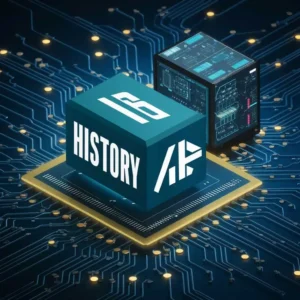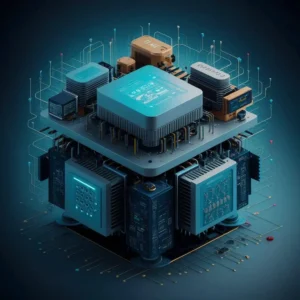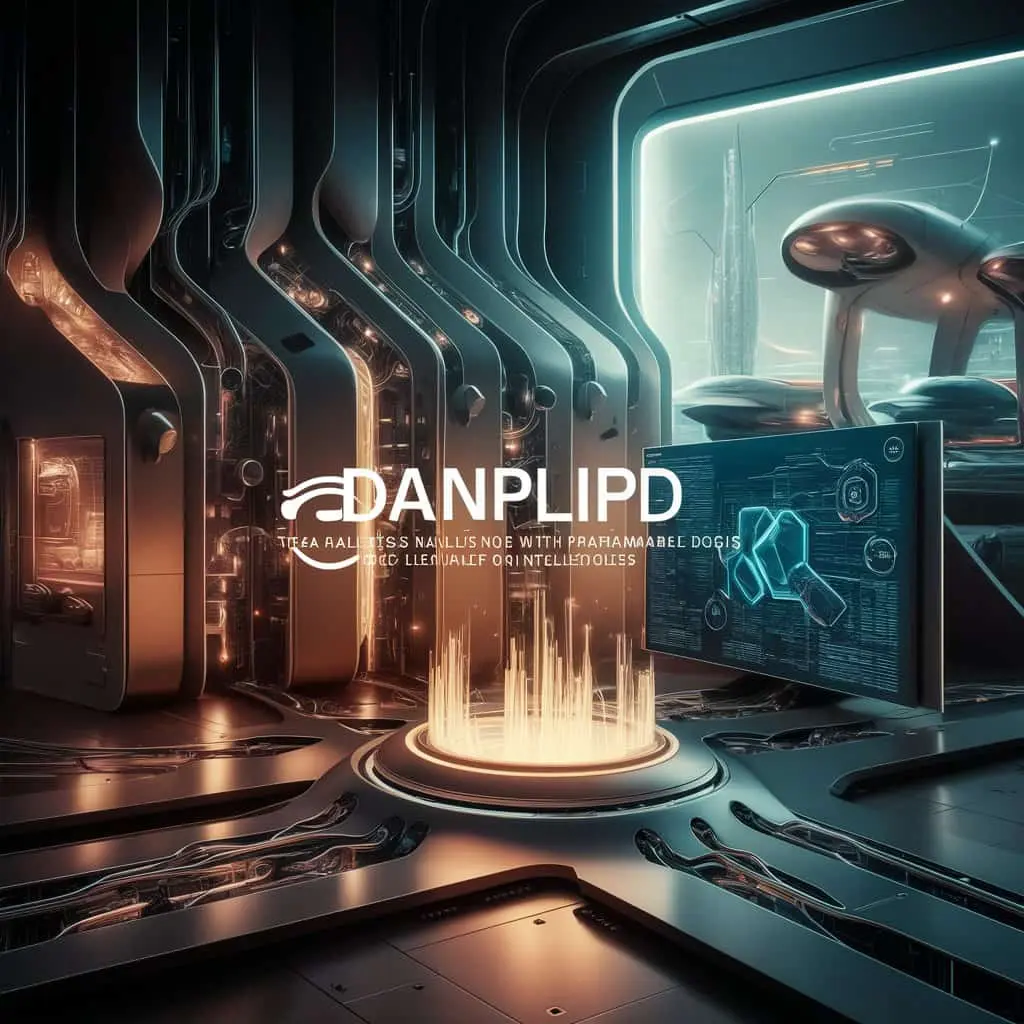Introduction
Danplipd, which stands for Data Analysis Node with Programmable Logic for Intelligent Devices, is a revolutionary technology designed to process and analyze data directly at the edge of the network. This eliminates the need to send raw data to a central server for processing, offering significant advantages in terms of speed, efficiency, and security.
Key Features:
- Edge Computing: Processes data locally, reducing latency and bandwidth usage.
- Programmable Logic Unit (PLU): Enables customization of data manipulation and analysis tasks.
- Low-Power Operation: Ideal for battery-powered devices and resource-constrained environments.
- Real-Time Insights: Provides immediate analysis of data streams for faster decision-making.
Potential Applications:
- Internet of Things (IoT): Analyze sensor data for predictive maintenance, anomaly detection, and real-time optimization.
- Wearable Devices: Process health data on-device for personalized health insights and improved user experience.
- Industrial Automation: Perform real-time machine monitoring and control for enhanced efficiency and safety.
- Smart Grids: Analyze energy consumption data for optimized power distribution and demand management.
History

Origins of Danplipd:
The story of Danplipd starts back in the early 2000s. A team of brilliant researchers set out on a mission: to make data analysis and prediction methods way easier. They looked to different fields for inspiration, like statistics, computer science, and even engineering. This blend of knowledge helped them lay the groundwork for what would become a revolutionary platform.
Evolution over the years:
Danplipd hasn’t stayed the same. Over time, it’s gone through major changes, as new advancements in artificial intelligence (AI) algorithms, data processing techniques, and user interface design emerged. What began as a basic idea to test a concept has become a cutting-edge tool with incredible capabilities. Danplipd’s journey is a true story of constant innovation and technological mastery.
Architecture

Danplipd is a compact device equipped with several key components that work together to enable intelligent data processing at the edge
- Processing Unit (PU): The brain of danplipd, responsible for executing instructions and performing core data processing tasks.
- Memory: Stores data and programs used by the PU for efficient operation.
- Network Interface: Connects danplipd to other devices and networks for data exchange and communication.
- Programmable Logic Unit (PLU): A unique feature of danplipd, the PLU is a hardware component that can be programmed to perform specific data manipulation and analysis tasks. This allows for customization of the data processing pipeline to meet the specific needs of the application.
Role of Each Component in Data Processing:
- Data Acquisition: The network interface receives data from sensors or other devices.
- Pre-processing: The PU performs basic operations like filtering and formatting on the incoming data.
- Programmable Logic: The PLU executes custom logic defined by the programmer to manipulate and analyze the data according to specific requirements.
- Post-processing: The PU performs any further processing needed on the analyzed data.
- Action or Transmission: Based on the results, danplipd can take actions locally (e.g., control a device) or transmit the processed data to a central server for further analysis or storage.
Programming the PLU
The PLU unlocks customization for danplipd. Program it with C/C++, assembly language, or domain-specific languages (DSLs) to create algorithms for data manipulation and analysis tasks directly on the device.
Common PLU applications include:
- Filtering: Reduce data volume by filtering irrelevant data on-device.
- Real-time Analytics: Gain immediate insights from data streams with custom PLU algorithms.
- Data Transformation: Extract features or perform aggregation on-device for efficient processing.
The magic behind danplipd’s customization lies in its Programmable Logic Unit (PLU). This section dives into how you can leverage the PLU to develop custom logic for data manipulation and analysis on the device itself.
Programming Languages:
The specific programming languages supported by danplipd might vary depending on the manufacturer and model. However, some common options include:
- C/C++: These low-level languages offer fine-grained control over hardware and provide high performance for computationally intensive tasks.
- Assembly Language: For ultimate control and optimization, assembly language can be used, but it requires a deep understanding of the PLU’s architecture.
- High-Level Domain-Specific Languages (DSLs): Some manufacturers might offer specialized DSLs tailored for data processing tasks on danplipd, simplifying development for those without extensive programming experience.
Developing Custom Logic:
The process of developing custom logic for the PLU typically involves these steps
- Understanding Data Flow: Analyze the data coming into danplipd and define the desired manipulation or analysis outcomes.
- Algorithm Design: Develop algorithms to achieve the desired data processing based on your understanding of the data and the PLU’s capabilities.
- Code Implementation: Translate your algorithms into the chosen programming language, keeping in mind the resource constraints of the PLU (memory, processing power).
- Testing and Debugging: Thoroughly test your code on a development platform or emulator to ensure it functions correctly and efficiently.
- Deployment: Once satisfied, deploy the code onto the actual danplipd device.
PLU Application Examples:
The PLU’s programmability opens doors to various data processing applications at the edge. Here are some examples:
- Data Filtering: The PLU can be programmed to filter out irrelevant or redundant data before further processing, reducing bandwidth usage and processing load.
- Real-Time Analytics: Develop custom algorithms on the PLU to perform real-time analysis of data streams, enabling faster decision-making based on immediate insights.
- Feature Extraction: Extract specific features or patterns from the data stream using the PLU, which can then be used for anomaly detection, classification, or other tasks.
- Data Aggregation: The PLU can perform on-device aggregation of data, summarizing information before transmission to a central server, reducing data volume and network traffic.
By leveraging the PLU’s programmability, danplipd empowers developers to create intelligent devices that analyze data locally, unlocking a new era of efficient and intelligent edge computing.
Benefits of Danplipd
Danplipd offers a compelling set of advantages for data processing at the edge:
-
Low-Power Operation: Ideal for battery-powered devices and resource-constrained environments. danplipd’s efficient architecture minimizes power consumption, allowing for extended operation on batteries or in low-power settings. This makes it perfect for applications like wearable devices or remote sensor networks.
-
Edge Computing Capabilities: Processes data locally, reducing latency and bandwidth usage. By performing analysis directly on the device, danplipd eliminates the need to send raw data to a central server. This significantly reduces latency, as data doesn’t need to travel long distances for processing. Additionally, it minimizes bandwidth usage, which is crucial for applications with limited or expensive network connectivity.
-
Real-time Data Insights: Provides immediate analysis of data streams for faster decision-making. danplipd’s on-device processing enables real-time analysis of data streams. This allows for immediate extraction of valuable insights, enabling faster decision-making based on current conditions. This is critical for applications requiring quick reactions, such as predictive maintenance in industrial settings or anomaly detection in security systems.
-
Reduced Data Transfer Requirements: Less data needs to be sent to a central server, improving efficiency and security. Since danplipd processes data locally, only the processed results or specific data points need to be transmitted to a central server. This significantly reduces the amount of data transferred, enhancing network efficiency and minimizing security risks associated with sending raw data.
Real-World Use Cases:
These advantages make danplipd ideal for various real-world applications:
- IoT Devices: Analyze sensor data from wearables, smart homes, or industrial equipment directly on the device, enabling real-time monitoring, anomaly detection, and personalized user experiences.
- Sensor Networks: Process environmental data collected from distributed sensors for on-site analysis before sending aggregated information to a central server, reducing network traffic and improving data quality.
- Autonomous Vehicles: Analyze sensor data from cameras and LiDAR to perform on-device object detection and path planning, enabling faster decision-making and safer autonomous navigation.
- Smart Grids: Process energy consumption data from meters and smart devices to optimize power distribution and demand management locally, improving grid efficiency and reducing energy waste.
Limitations and Challenges
Despite its benefits, danplipd has limitations to consider:
-
Processing Power and Memory Constraints: danplipd devices are generally smaller and more power-efficient than traditional computers. This translates to limitations in processing power and memory compared to high-performance servers. This might limit the complexity of algorithms that can be run on the PLU.
-
Programming Complexity: Depending on the chosen programming language (e.g., assembly language), developing custom logic for the PLU can be complex compared to traditional high-level programming. Programmers need to consider hardware limitations and optimize code for efficient resource utilization.
Challenges in Development and Deployment:
Developing and deploying PLU programs can present some challenges:
-
Limited Development Tools: Compared to traditional programming environments, development tools for danplipd PLUs might be limited. This can make debugging and testing code more challenging.
-
Security Considerations: As danplipd devices process data locally, security needs careful consideration. Ensuring secure code execution and data protection on these devices is crucial.
-
Integration with Existing Systems: Integrating danplipd with existing data processing pipelines and infrastructure might require additional development effort.
However, Danplipd technology is constantly evolving. Advancements are expected to address these limitations, such as increased processing power, improved development tools, and standardized security solutions. As danplipd matures, its potential for intelligent edge computing will continue to expand across various applications.
Demystifying Danplipd
Theoretical Applications: A Glimpse into the Future
Danplipd’s potential extends far beyond its current applications. Here’s a look at how it might revolutionize various fields:
1. The Rise of Super-AI?
Imagine danplipd devices equipped with on-device machine learning capabilities. This could lead to a new generation of AI, capable of learning and adapting at the edge without relying solely on centralized cloud processing. While concerns about superintelligence exist, danplipd’s distributed nature could foster a more collaborative and responsible development of AI.
2. Communication Redefined
danplipd’s real-time processing abilities can transform communication. Imagine real-time language translation happening on your device during conversations, or instant sentiment analysis in social media interactions. This could revolutionize communication by breaking down language barriers and fostering deeper understanding.
3. A New Era of Energy
Danplipd devices integrated with smart grids could optimize energy consumption in real-time. Localized processing of energy data can enable predictive maintenance for power grids, dynamic pricing based on real-time demand, and efficient distribution of renewable energy sources.
Expert Insights: The Power of Diverse Perspectives
To realize danplipd’s full potential, collaboration between various experts is crucial. Engineers, data scientists, policymakers, and ethicists must work together to ensure responsible development and deployment. Their diverse perspectives will be essential in addressing security concerns, mitigating potential biases in AI algorithms, and creating a future where danplipd benefits everyone.
The Hype vs. Reality: Separating Fact from Fiction
It’s important to maintain a balanced perspective on danplipd. While its potential is vast, there are limitations to address. Processing power and memory constraints will likely remain, and security needs careful consideration. However, ongoing advancements are continuously bridging these gaps.
A Glimpse into the Danplipd Future
A Transformed Daily Life
Danplipd has the potential to seamlessly integrate into our daily lives:
- Personalized healthcare with real-time health data analysis on wearable devices.
- Enhanced smart homes with intelligent appliances that adapt to our needs.
- Optimized traffic flow through real-time traffic analysis and dynamic route adjustments.
Beyond the Convenience: Potential Challenges Remain
A Danplipd-driven future also presents challenges:
- Privacy concerns: Ensuring data privacy on edge devices needs to be addressed.
- Digital divide: Unequal access to danplipd technology could exacerbate existing inequalities.
- Job displacement: Automation powered by danplipd might lead to job losses in certain sectors.
Preparing for the Danplipd Era: Embracing Change
Proactive measures are necessary to navigate these challenges:
- Open discussions about the ethical implications of danplipd.
- Investing in education and training to prepare for a changing job market.
- Establishing regulations to ensure responsible data use and privacy protection.
A Future Full of Potential
Danplipd presents a future brimming with possibilities. By embracing its potential while addressing the challenges, we can pave the way for a future where this technology empowers us to create a more efficient, sustainable, and equitable world.
Danplipd vs. The Pack: How Does it Measure Up?
Danplipd sounds impressive for data analysis and prediction, but is it the only option? Not quite! Let’s compare it to other popular choices. There are open-source platforms like TensorFlow and PyTorch, perfect for those who love to tinker. But if you prefer a more user-friendly experience, there are commercial solutions like SAS and IBM Watson. Whichever path you choose, understanding each option’s strengths and weaknesses is key to making the best decision for your business.
Danplipd: Small Business Superhero?
Danplipd can be a real equalizer for small business owners. It’s not just for big tech companies! This powerful tool can help you improve your operations, connect better with customers, and ultimately achieve long-term growth.
Making the Most of Every Minute:
Danplipd can automate repetitive tasks, freeing up your team to focus on more strategic things. Imagine saving time on inventory management or customer service tasks! These efficiency gains can translate to real cost savings for your business.
Know Your Customers, Grow Your Business:
Danplipd analyzes customer data to personalize the shopping experience. This means recommending products and services that your customers will actually love. Building stronger customer relationships is essential for any small business, and Danplipd can help you get there.
Seeing is Believing: The Power of Real-World Examples
Let’s see Danplipd in action! Imagine a startup using Danplipd to forecast demand perfectly, ensuring they always have the right amount of stock on hand, no matter the season. Or how about a mid-sized company using Danplipd to automate tasks, allowing their HR team to focus on more innovative projects that drive growth? These are just a few examples of how Danplipd can make a real difference.
Danplipd: Your SEO Secret Weapon
Want your website to be seen by more people? Danplipd can help with that too! It can optimize your content, suggest keywords, and even track search engine algorithms. The result? A website that ranks higher in search results, bringing in more customers.
Creating Content that Converts
Danplipd can be your secret weapon for creating high-quality, engaging content that’s optimized for search engines. By analyzing SEO trends and user behavior, it helps you ensure your content is relevant and impactful, exactly what you need to attract and retain customers.
Stay Ahead of the Curve with Predictive SEO
One of Danplipd’s coolest features is its ability to predict changes in search engine algorithms. This means you can adjust your SEO strategy before the changes even happen, giving you a critical edge over your competitors. With Danplipd on your side, you can stay ahead of the curve and keep your website ranking high.
Here are frequently asked questions about Danplipd:
1. What is danplipd?
A: danplipd stands for Data Analysis Node with Programmable Logic for Intelligent Devices. It’s a revolutionary technology that processes and analyzes data directly at the edge of the network, eliminating the need to send raw data to a central server for processing. This offers significant advantages in terms of speed, efficiency, and security. [Source: https://bali-pura.com/auras-energy-our-process/]
2. What are the benefits of using danplipd?
A: Danplipd offers several advantages, including:
-
- Low-power operation: Ideal for battery-powered devices and resource-constrained environments.
- Edge computing capabilities: Processes data locally, reducing latency and bandwidth usage.
- Real-time data insights: Provides immediate analysis of data streams for faster decision-making.
- Reduced data transfer requirements: Less data needs to be sent to a central server, improving efficiency and security. *Source: https://bali-pura.com/auras-energy-our-process/]
3. What are some real-world applications of danplipd?
A: Danplipd has a wide range of applications, including:
-
- IoT devices: Analyze sensor data from wearables, smart homes, or industrial equipment directly on the device.
- Sensor networks: Process environmental data collected from distributed sensors for on-site analysis.
- Autonomous vehicles: Analyze sensor data for on-device object detection and path planning.
- Smart Grids: Process energy consumption data from meters and smart devices to optimize power distribution. *Source: https://www.aura.com/]
4. Does danplipd have any limitations?
A: Danplipd does have some limitations to consider:
-
- Processing power and memory constraints: danplipd devices are generally smaller and more power-efficient than traditional computers, limiting the complexity of algorithms.
- Programming complexity: Programming the PLU (Programmable Logic Unit) can be challenging depending on the chosen language. *Source: https://developer.salesforce.com/docs/platform/lwc/guide/security-lwsec-aura-limitations.html]
5. What does the future hold for danplipd?
A: The future of danplipd is promising, with potential advancements including:
-
- Increased processing power and memory capacity.
- Improved development tools for easier PLU programming.
- Standardized security solutions for danplipd devices.
- Integration with other edge computing solutions like cloud and fog computing. *Source: https://www.prnewswire.com/news-releases/aura-unveils-its-digital-dilemmas-and-cyber-culture-2024-report-revealing-a-range-of-online-behaviors-among-americans-302123818.html]
Conclusion
In conclusion, Danplipd emerges as a powerful tool for data analysis and prediction, offering a compelling option for businesses of all sizes. Whether you’re a small business owner seeking to streamline operations and boost customer engagement, or a larger company aiming to stay ahead of the curve with SEO, Danplipd’s capabilities deserve serious consideration. While alternatives exist, Danplipd’s user-friendly approach, automation potential, and powerful predictive features make it a strong contender in the ever-evolving world of data-driven decision making. So, if you’re looking to leverage the power of data to optimize your business strategies and gain a competitive edge, Danplipd might be the gamechanger you’ve been waiting for.
Other Article
Software Doxfore5: Boosting Productivity and Security
KingYmaB: Unveiling the Potential Impact on 2024 Blogging


[…] Danplipd the Missing Piece in Your Business Growth […]
[…] Danplipd the Missing Piece in Your Business Growth […]
[…] Danplipd the Missing Piece in Your Business Growth […]